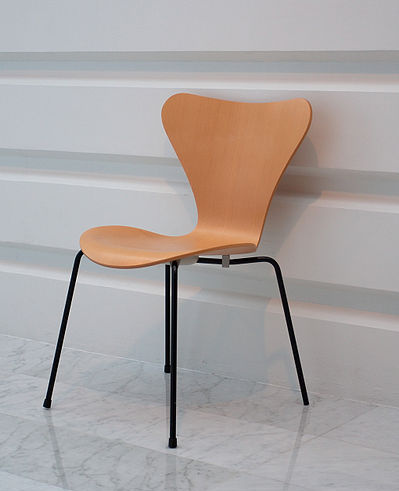| Tikalon Blog is now in archive mode.
An easily printed and saved version of this article, and a link
to a directory of all articles, can be found below: |
|
This article |
| Directory of all articles |
David Rowland
September 10, 2010
Architects do more than just design the huge brick-and-mortar
caves in which most of us labor. They often take charge of furnishing the interiors of these buildings. When the corporate research organization for which I worked consolidated a number of small laboratories into a new structure in the 1980s, we found that original
lithographs had been placed in each of our offices. Of course, we weren't consulted as to our artistic preferences beforehand. In the corporate world, a work of art is known by just one thing - its price. The first thing we did upon moving wasn't to christen our new laboratories with a few chemicals spilled on the floor, but to swap lithographs to get something we would care to stare at for many of our waking hours.
Such architectural largess was responsible for jump-starting the career of the
industrial designer,
David Lincoln Rowland, who died last month at the age of eighty-six.[1-3] Rowland designed the now ubiquitous stackable chair in the 1950s, but not many of his design were manufactured at first. Rowland called his chair the "40/4," since 40 chairs could be stacked to just a four foot height. It was a 1963 order by the architects,
Skidmore, Owings and Merrill, for 17,000 of his chairs for the
University of Chicago that set Rowland's chair before the public eye. Just a year after that, the chair won the grand prize in the annual design contest hosted by the
Milan Triennale, and it subsequently entered the permanent collection of the
Museum of Modern Art in
New York City.

Stackable chair (photo by Dori).
Rowland was born into an artistic family. His father was director of an art museum in
Stockton, California, and his mother was a violinist. The old adage about artists needing to suffer for their craft was true for Rowland, since he lived in a low rent, one room apartment in
Manhattan while working his first job with the industrial designer,
Norman Bel Geddes.[3] It was in this apartment that he developed his chair. The original chair, made from plastic and steel, sold for $16 in 1963. An upscale wood veneer model can be had for a little under $300 today.[1]
On the topic of industrial design, Norman Bel Geddes, Rowland's first employer, designed the
General Motors Pavilion for the
1939 New York World's Fair. The pavilion was known as "
Futurama," which is now the name of a popular
cartoon series. Were Rowland's chair designed two decades earlier, it would have fit well into a futurama theme.
References:
- Dennis Hevesi, "Obituary: David Rowland / Designed now famous stackable chairs," Pittsburgh Post-Gazette, August 31, 2010.
- Dennis Hevesi, "David Rowland, Maker of a Tidily Stacked Chair, Dies at 86," New York Times, August 25, 2010.
- David Rowland page on Wikipedia.
Permanent Link to this article
Linked Keywords: Architect; caves; lithograph; industrial designer; David Lincoln Rowland; Skidmore, Owings and Merrill; University of Chicago; Milan Triennale; Museum of Modern Art; New York City; Stockton, California; Manhattan; Norman Bel Geddes; General Motors; Pavilion; 1939 New York World's Fair; Futurama.